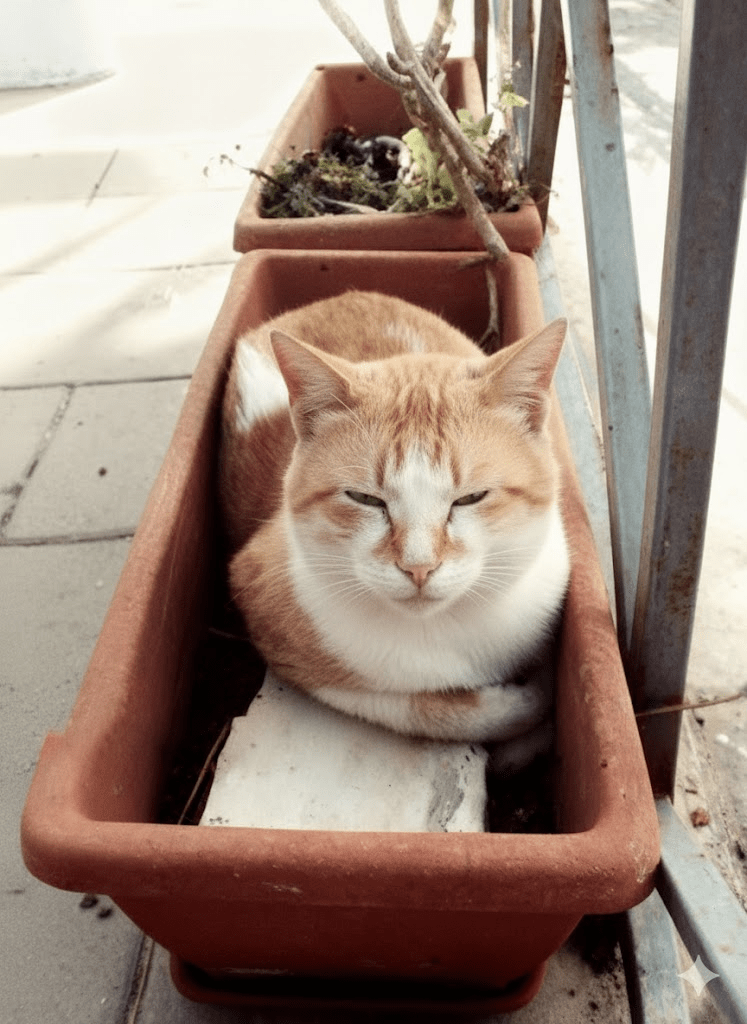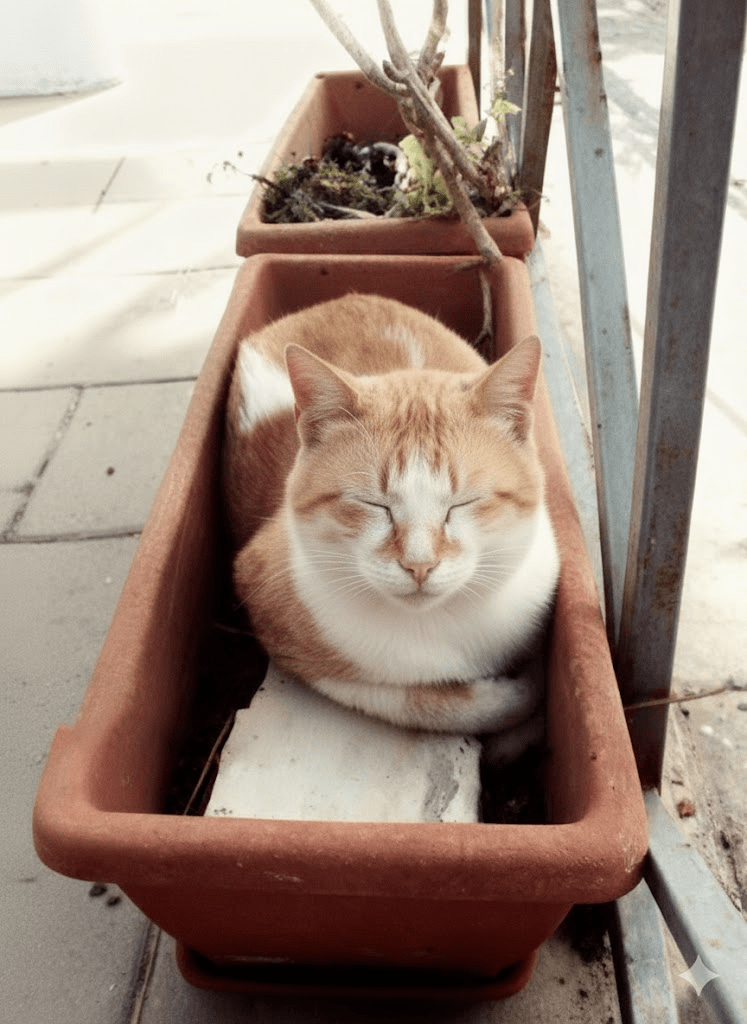In an increasingly dense and often impersonal urban landscape, the search for personal space and comfort becomes a paramount endeavor, not just for humans, but for our animal companions as well. Consider the profound contentment of a ginger and white cat, perfectly nestled within the confines of a terracotta planter box, a small piece of stone serving as its makeshift pillow. This image, at once charming and thought-provoking, encapsulates a broader narrative about adaptability, the reclaiming of overlooked spaces, and the inherent ability of living beings to find solace and establish a sense of belonging in the most unconventional settings. It challenges our preconceived notions of what constitutes a “proper” home or a comfortable sanctuary, urging us to look beyond traditional boundaries and appreciate the simple yet profound acts of creating peace amidst the everyday hustle. This feline’s choice of resting place—a narrow, sun-warmed trough designed for botanical life—speaks volumes about resourcefulness and the pursuit of optimal conditions for rest and relaxation, irrespective of its intended purpose. It invites us to pause and reflect on our own environments, prompting a re-evaluation of how we define comfort and how readily we might overlook the potential for tranquility in the most unassuming corners of our world.

The phenomenon of animals adapting to urban environments is well-documented, yet the specific ways in which they carve out niches for themselves continue to surprise and delight observers. This cat, in particular, demonstrates an exemplary case of behavioral plasticity. Rather than seeking out typical feline resting spots like soft cushions or secluded bushes, it has identified the planter box as an ideal haven. This decision is likely driven by a combination of factors: the warmth absorbed by the terracotta during the day, offering a cozy microclimate; the raised elevation providing a vantage point and a sense of security from ground-level disturbances; and the enclosed nature of the box itself, mimicking the feeling of a den or a protective nook. The presence of the small stone further illustrates an intelligent use of available resources, transforming a hard, inert object into a customized headrest, enhancing its comfort. This adaptability is crucial for urban wildlife, enabling them to thrive amidst human infrastructure and challenges.

Furthermore, this image highlights the often-underestimated connection between humans and the natural world, even in its most mundane forms. While the planter box was undoubtedly placed by a human with the intention of growing plants, its appropriation by the cat creates an unexpected intersection of domesticity and wildness. This interaction offers a poignant reminder that urban spaces are not solely human domains; they are shared ecosystems where various forms of life continually interact and adapt. For many city dwellers, observing such instances of animal ingenuity provides a sense of wonder and a connection to nature that might otherwise be lacking. It fosters empathy and an appreciation for the subtle ways in which biodiversity persists and flourishes even in artificial environments. This small act of a cat making itself at home in a planter can, therefore, serve as a gentle nudge for us to consider our impact on, and coexistence with, other species.

From an urban planning and design perspective, this scenario also offers valuable insights. It suggests that seemingly utilitarian or decorative elements in urban landscapes—like planter boxes, window sills, or even small ledges—can inadvertently become vital resources for local wildlife. Designers and city planners might consider this when creating public spaces, potentially incorporating features that cater not only to human needs but also provide safe and comfortable havens for urban animals. This doesn’t necessarily mean radical changes, but perhaps a more mindful selection of materials that retain warmth, or the strategic placement of objects that can double as shelter or resting spots. A greater understanding of how animals utilize existing structures can lead to more harmonious and biodiverse urban environments, enriching the lives of both human and non-human inhabitants.







